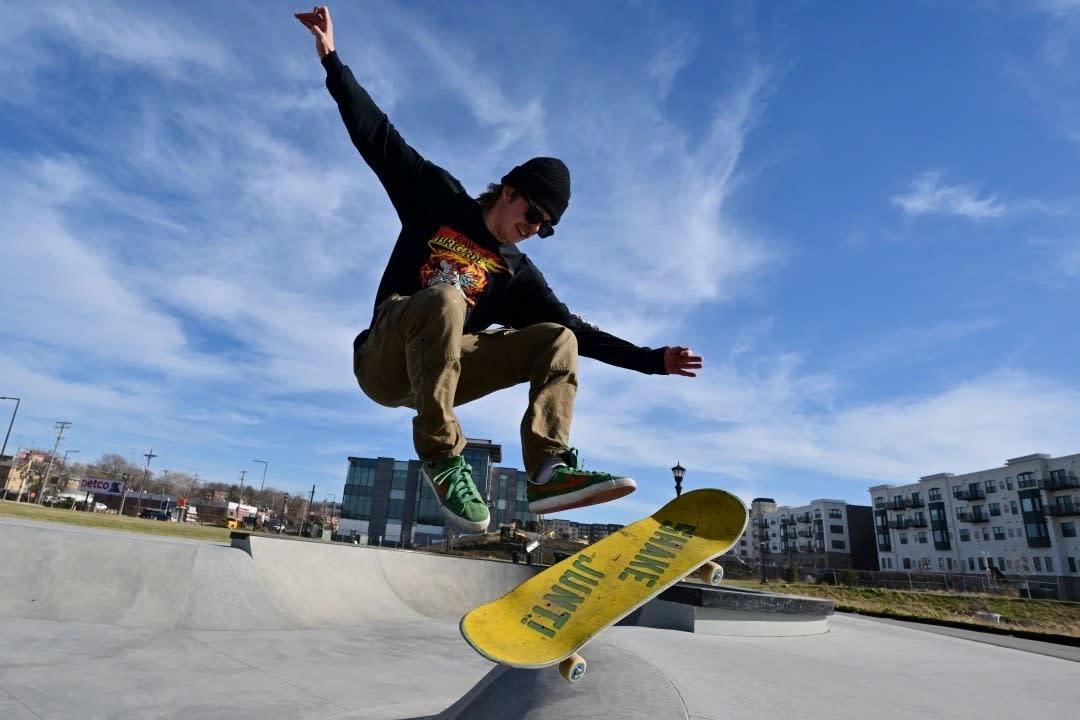Who has the best public parks in the nation? Study: The Twin Cities — and Washington, D.C.

St. Paul, long a powerhouse player in a national ranking of municipal park systems, once again placed in the top three performers this year, edged out by Minneapolis and repeat first-place winner Washington, D.C., in the Trust for Public Land’s annual ParkScore index.
“This is the 10th year that St. Paul was included in the ranking, and it’s been a 10-year battle for those top positions,” said Sophie Vorhoff, Minnesota state director with the Trust for Public Land. “This year, Minneapolis barely edged out St. Paul, whereas St. Paul barely edged out Minneapolis last year. These are two of the foremost park systems in the country.”
The index is presented as something of a friendly competition between the 100 most populous cities in the country, and a strong general barometer of which municipalities are investing in park space, amenities and access. Both Minneapolis and St. Paul have made strides toward ensuring that all residents live within a 10-minute walk of a public park, with the index finding that both cities can say that’s true for 99% of each city’s population.
The index has also begun in recent years to evaluate equity, or the size and number of parks and amenities in neighborhoods with large populations of low-income residents and residents of color.
St. Paul Parks and Recreation is working with residents in the vicinity of Central Village Park on Central Avenue and Mackubin Street to plan a 50th anniversary celebration for the park this July, and investing in a new public park within the Heights, at the soon-to-be-redeveloped site of the former Hillcrest Country Club on the city’s East Side.
“St. Paul made some real gains this year in its equity stats,” Vorhoff said. “The city has made some real advancement in terms of thoughtfully investing in its park system to make sure that everyone, no matter their income or the color of their skin, has access to a high-quality park. … There’s still room for growth, but we’ve been really impressed in terms of how much St. Paul’s numbers have improved.”
‘This crisis of isolation and loneliness’
Minneapolis recently opened two new dog parks, added some parks bathrooms and acquired the 53-acre Upper Harbor Terminal land for redevelopment, which will include a 20-acre regional park along the Mississippi River. St. Paul has in recent years opened new parks amenities at Highland Bridge, including a dog park, a skate park, multiple playgrounds, and pickleball and basketball courts bordering a canal-like water feature.
“Across the country, there’s this crisis of isolation and loneliness, and parks are where you can come together and rebuild that social connection,” Vorhoff said. “I have a 3-year-old and a baby and I’m spending a lot of time at Highland Bridge parks. … I have found that Highland Bridge has really social parks for parents. Maybe people are really excited about the new investment there.”
Alongside its annual index, the Trust for Public Land issued a new research report, “The Power of Parks to Strengthen Community,” that found that residents of cities ranking in the top quarter of the ParkScore index were 60% more likely to have volunteered in the past 12 months than residents of lower-ranking cities.
Residents of higher-ranking cities were also 26% more likely to form friendships with people in different socio-economic groups, a proven strategy toward increasing economic mobility and reducing inequality.
Other factors considered in ParkScore
Among the 100 ParkScore cities indexed, there was on average 45% less park space in low-income neighborhoods and neighborhoods where most residents identify as people of color than in more affluent neighborhoods and predominantly white neighborhoods. Those disparities were less evident in St. Paul, home to some 270 parks, but even more evident in Minneapolis, according to the index.
St. Paul continues to fare well above average when it comes to parks spending per capita, a ratio that is poised to increase with a new 1% sales tax approved by voters last November with the goal of funding a backlog of road reconstruction and a wide variety of park maintenance and new parks projects.
The pandemic drew many people outdoors, inspiring many cities to leverage federal stimulus dollars to increase investments in their outdoor spaces. Nationally, average park spending per resident increased to a new high of $124, up from $108 the year prior.
Cities were ranked in this year’s ParkScore index based on the percentage of residents living within a 10-minute walk of a park, park equity, a city’s median park size and the percentage of city area dedicated to parks, park spending per resident and the availability of six particular amenities: basketball hoops, off-leash dog parks, splashpads and other water-play structures, recreation and senior centers, playgrounds and restrooms.
The top 10 cities, based on their index ranking between 1-100, were Washington, D.C. (84.8); Minneapolis (82.5); St. Paul (81.6); Irvine, Calif. (80.1); Arlington, Va. (79.2); Seattle, Wash. (77.4); San Francisco, Calif. (76.5); Cincinnati, Ohio, (75.8); Portland, Ore. (74); and Chicago, Ill. (71.8).
For more information, visit tpl.org.
Related Articles
Local News | Charges: St. Paul school put on lockdown after man tried to get inside, threatened staff with machete
Local News | Opponents of University of St. Thomas arena appeal to St. Paul City Council
Local News | Minnesota goes all-in on Anthony Edwards’ ‘Bring ya a**’ slogan
Local News | St. Paul student with Down syndrome receives national anti-bullying award
Local News | Bandwagon? ‘It’s a party bus’: Even hockey fans on board with the Timberwolves

